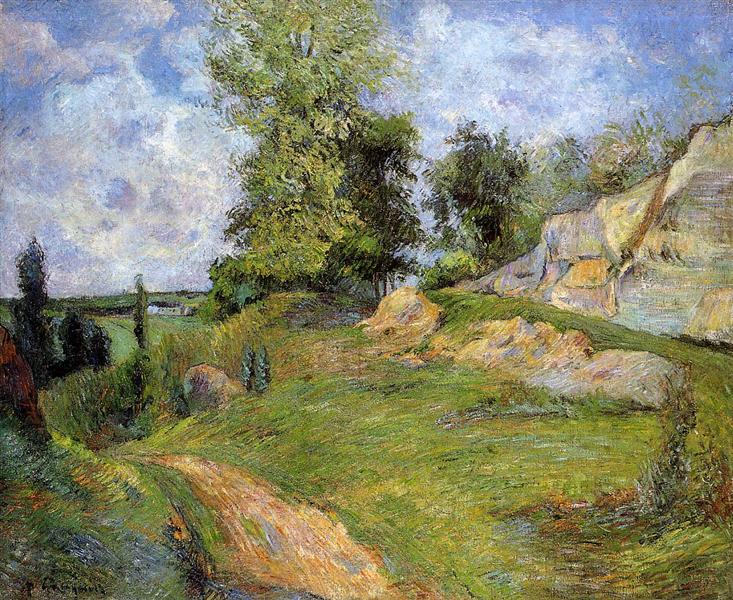Descrição
Paul Gauguin's painting "Quarries at Pontoise II", painted in 1882, falls within a crucial period of his artistic career, when he deeply explored landscapes and the interaction between nature and humans. This painting, like many of his contemporaries, reflects the search for a new way of representing reality, moving away from the predominant naturalism of the time. In "Quarries at Pontoise II", Gauguin offers us a fascinating view of the Pontoise quarry, a place that was not only known for its stone mining, but also became a space of experimentation for many artists of the post-impressionist movement.
From the first glance, the work stands out for its powerful and balanced composition. The arrangement of shapes and natural elements creates a sense of depth and texture, which is characteristic of Gauguin's style. The tilt of the rocks and the arrangement of the bushes add a dynamic energy to the painting, making the viewer feel the solidity of the landscape, almost as if they could walk through it. Despite the lack of visible human figures, the work conveys a palpable sense of human intervention in nature, reflecting the duality between the natural environment and its exploitation.
The use of color in “Quarry at Pontoise II” is one of the most captivating aspects of the painting. Gauguin employs a vibrant palette that evokes the strength of rock and the vitality of the surrounding vegetation. Earth tones combined with subtle greens create a harmony that, while rooted in reality, feels more like an emotional interpretation of the landscape than a mere visual record. The shadows and lights, with their rich variety of hues, suggest a time of day when light plays across shapes, alluding to Gauguin’s concern with capturing the essence of a place rather than its literal representation.
During this period, Gauguin distanced himself from the Impressionists and began to develop a more symbolic and personal approach to his art. Although "Quarry at Pontoise II" is a good example of his ability to capture the beauty of the landscape, one can already glimpse the signs that would lead him, later on, to create more radical and colorful works, imbued with deep symbolism and spirituality. This painting aligns perfectly with the development of a style that would set the course for his future work, characterized by a freer and more emotive use of color and form.
In the context of late 19th-century art, “Quarrys at Pontoise II” can be seen as a work that transitions between impressionism and symbolism, embracing the exploration of reality without leaving aside a poetic essence. The work highlights not only the visual beauty of the landscape, but also an underlying narrative about the relationship between humans and nature and the impact of modernity on natural environments. In short, this work not only serves as an example of Gauguin’s talent for manipulating color and form, but also invites viewers to reflect on the landscape and their life in a rapidly changing world.
KUADROS ©, a famous painting on your wall.
Hand-made oil painting reproductions, with the quality of professional artists and the distinctive seal of KUADROS ©.
Painting reproduction service with satisfaction guarantee. If you are not completely satisfied with the replica of your painting, we will refund 100% of your money.

